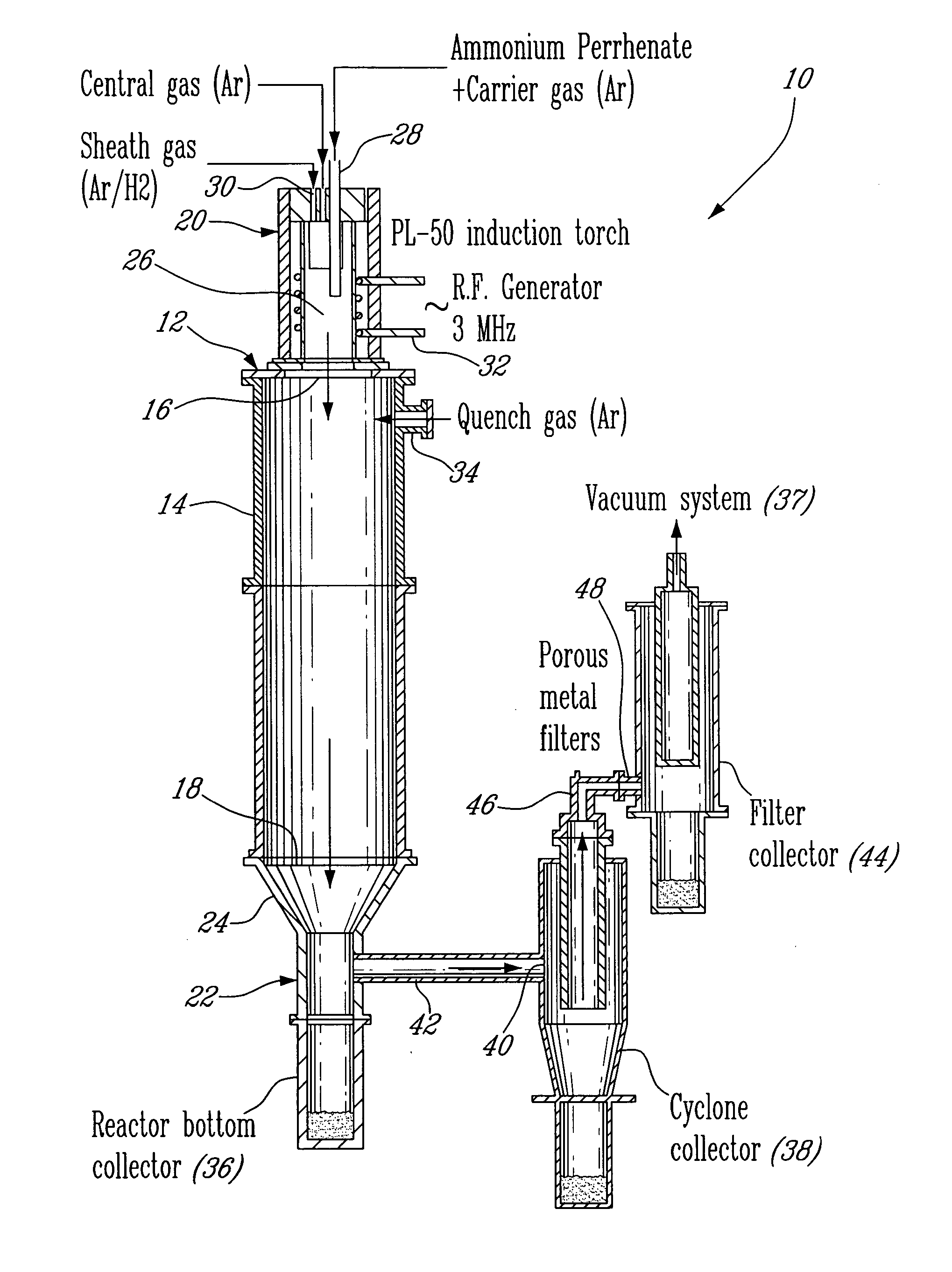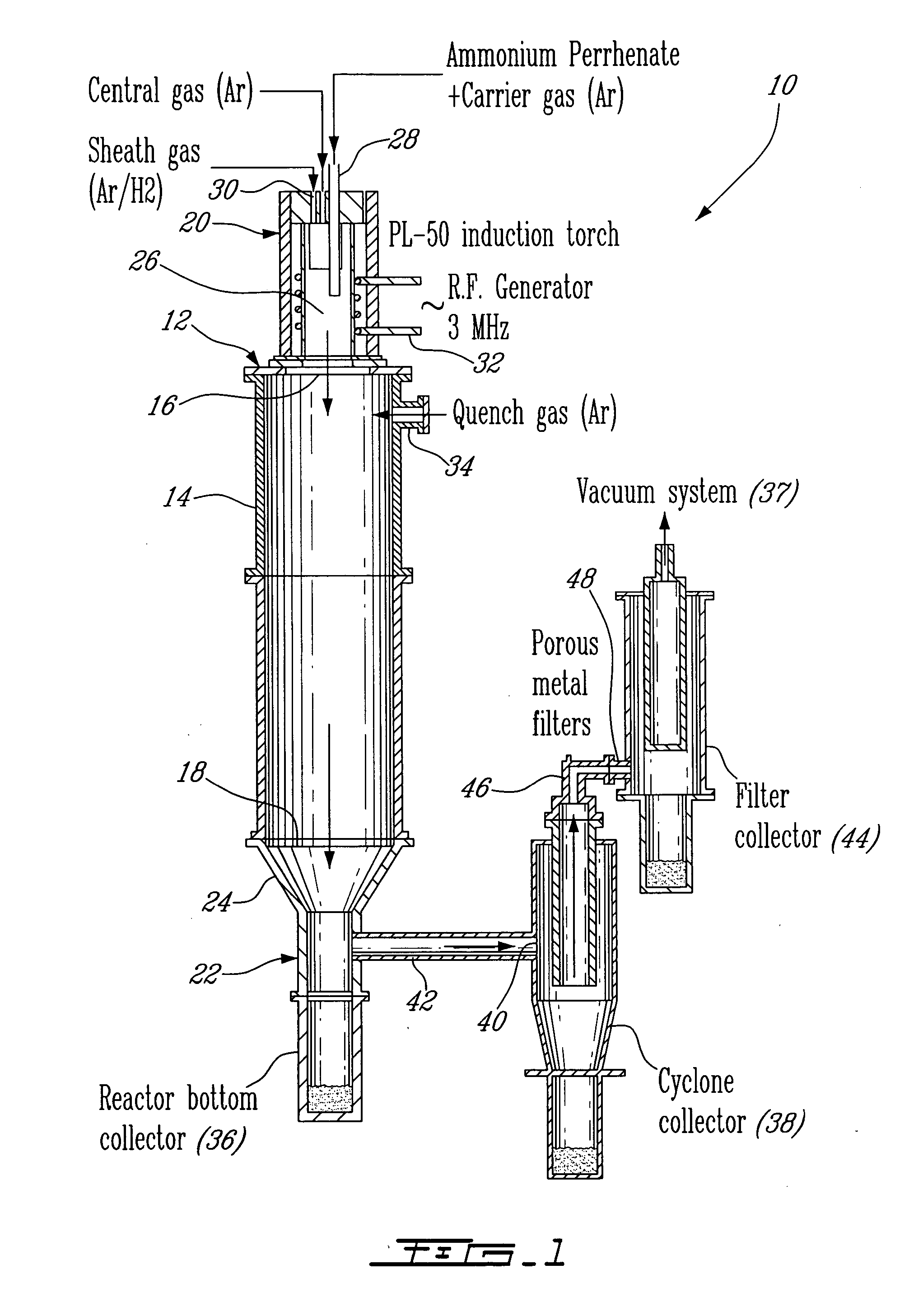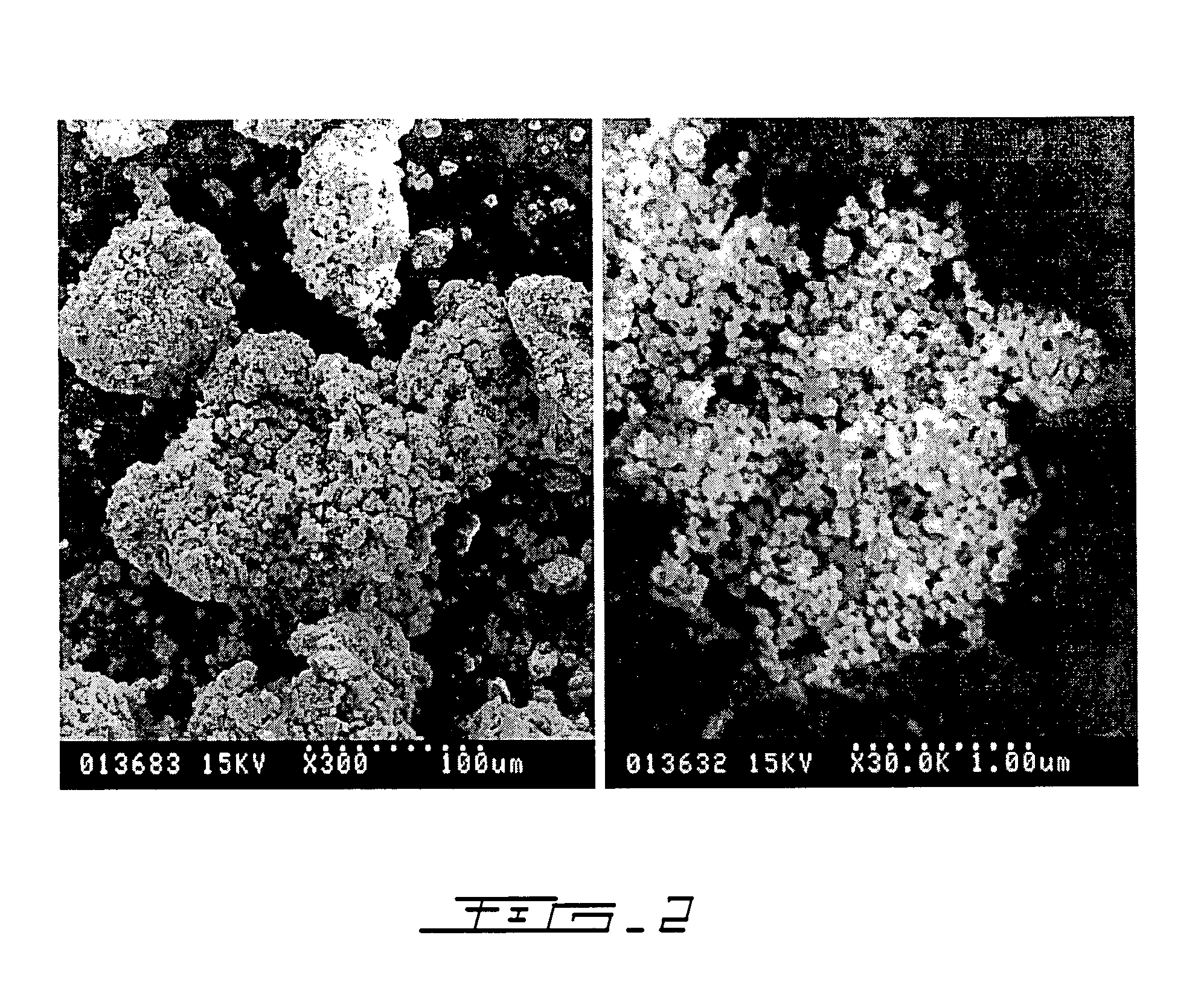Process for plasma synthesis of rhenium nano and micro powders, and for coatings and near net shape deposits thereof and apparatus therefor
- Summary
- Abstract
- Description
- Claims
- Application Information
AI Technical Summary
Benefits of technology
Problems solved by technology
Method used
Image
Examples
Embodiment Construction
[0024] An apparatus 10 for plasma synthesis of rhenium nano and micro powders according to an illustrative embodiment of the present invention will now be described with reference to FIG. 1.
[0025] The apparatus 10 comprises a plasma reactor 12, including a generally cylindrical reaction chamber 14 having opposite top and bottom longitudinal end apertures 16-18, a plasma torch 20 mounted on top of the reaction chamber 14 so as to be in fluid communication therewith through said top end aperture 16, and a first collector in the form of a reactor bottom collector 22 mounted to the reaction chamber 14 through the bottom end aperture 18 via a funnel 24 so as to be in fluid communication therewith and downstream thereof.
[0026] The plasma torch 20 is in the form of a an induction plasma torch model PL-50 from Tekna Plasma Inc. and includes a generally cylindrical plasma chamber 26, a reactant feeder 28 for injecting ammonium perrhenate powder in the plasma chamber 26 through a carrier ga...
PUM
| Property | Measurement | Unit |
|---|---|---|
| Pressure | aaaaa | aaaaa |
| Metallic bond | aaaaa | aaaaa |
| Gravity | aaaaa | aaaaa |
Abstract
Description
Claims
Application Information
 Login to View More
Login to View More - R&D
- Intellectual Property
- Life Sciences
- Materials
- Tech Scout
- Unparalleled Data Quality
- Higher Quality Content
- 60% Fewer Hallucinations
Browse by: Latest US Patents, China's latest patents, Technical Efficacy Thesaurus, Application Domain, Technology Topic, Popular Technical Reports.
© 2025 PatSnap. All rights reserved.Legal|Privacy policy|Modern Slavery Act Transparency Statement|Sitemap|About US| Contact US: help@patsnap.com



